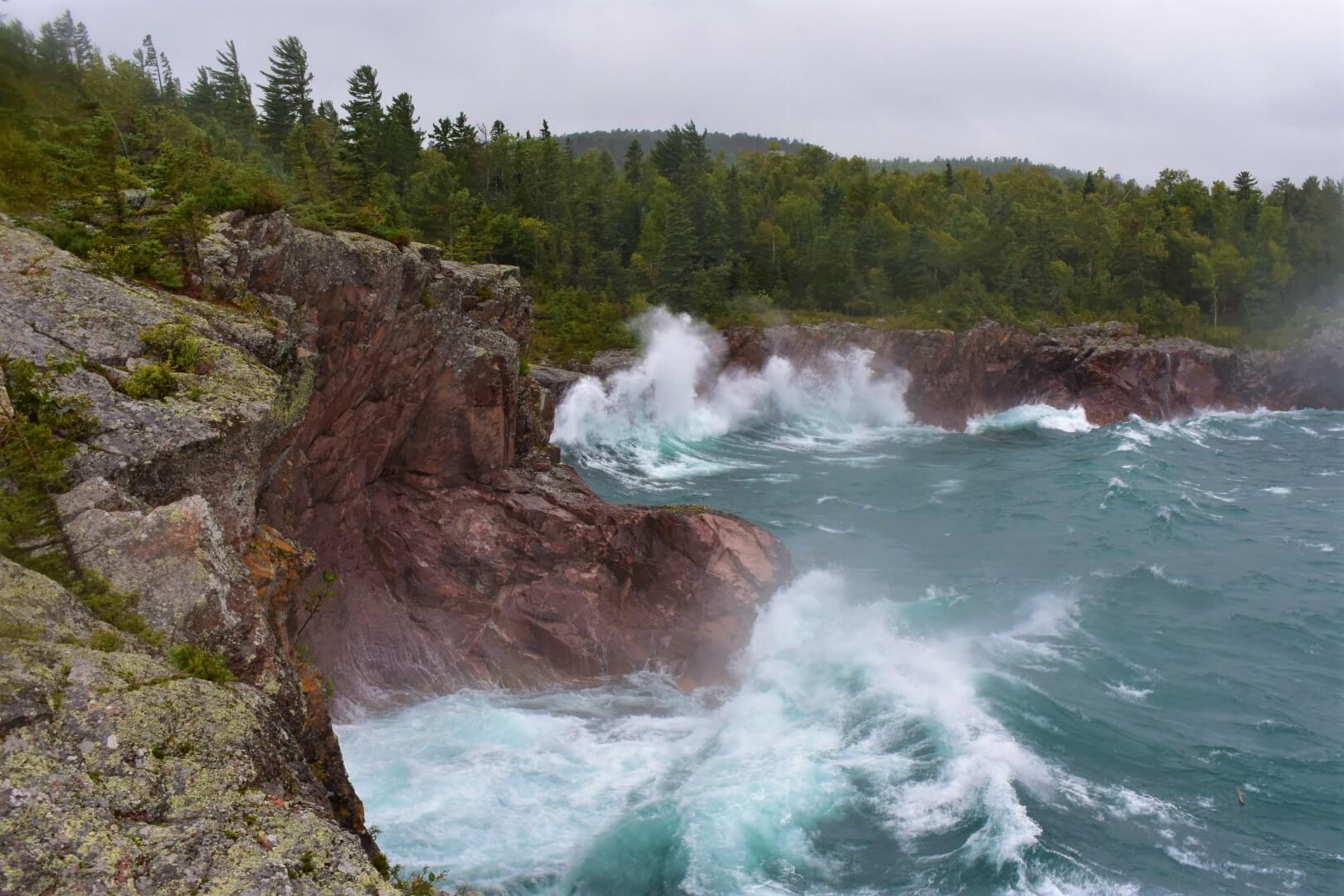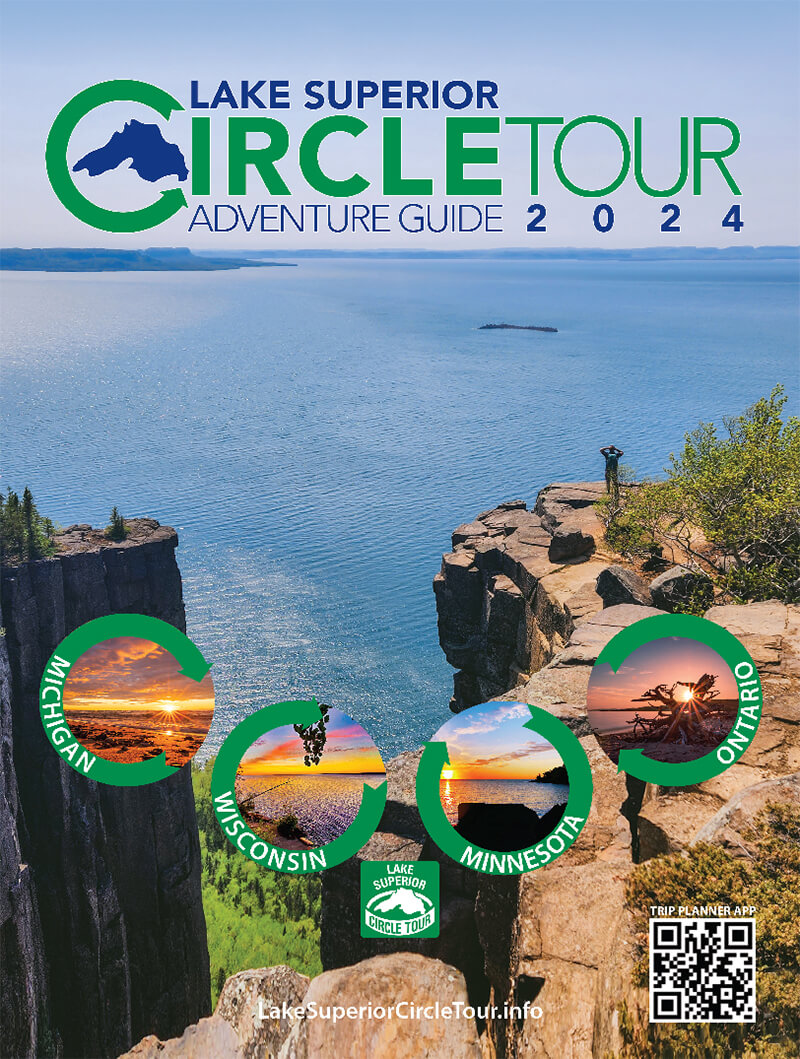Lake Superior – one the most breathtakingly beautiful and largest freshwater lakes in the world. Known for its crystal clear blue waters and frigid allure, not a lot of people know about its mysteriousness and hazardous nature; there is a reason why the sunken ships are called the “ghosts of Lake Superior” and why it’s home to some of the scariest sailor stories.
In all honesty, Lake Superior should be treated like an ocean. The waves definitely get high enough, and the results from the weather can certainly be as temperamental. I was lucky enough to grow up beside this stunning body of water on the Ontario North Shore. That being said, respect for this majestic lake was deeply ingrained in me from as early as I can remember. This, along with some important safety measures, ensured that I would feel comfortable being on the water, while also being prepared for the many curve balls Miss Lake Superior may throw.

My Grandpa has spent many days on Lake Superior, travelling in an old tug boat with his long time friend Captain Joe. The two of them together can tell the most amazing stories about the Lake, its breathtaking beauty, and its merciless moods. Now looking back, maybe they were just trying to scare me into making sure I would follow the safety precautions when going out onto the water…which, I might add, totally worked because I don’t think I’ve ever gone out onto the lake without being a total safety nut. I’d be yelling things like “your life jacket is undone a clip!!!”. Thanks, Grandpa.
Anyway, this brings me to the order of business at hand here. I am going to share with you a couple of the safety tips that I have learned over the years so that you can bask in the beauty and not dive into danger. Let’s get this party started.
Maps: Your Most Helpful Ally
When Captain Joe and my Grandfather were out sailing on the lake, whether it be for 2 hours or 2 days, the one thing they always had on hand was a map. You know, one of those big Lake Superior maps that show the entire lake with every island, bay, and port marked on it. This is vital to not only chart out a travel plan to ensure you get where you need to go safely, but also to have on hand. This is for just in case the weather starts to turn and you need to find a safe haven to ride out the bad weather. So, bottom line, never go on the water without a map, a plan, and a watchful eye of the sky. I’ll show you an example of what I mean down below.

Yes, this is a satellite view of the lake and not a paper map, but I don’t exactly have paper maps laying around. Plus, it’s so much better and easier to look at the area from your phone. Technology these days, so useful, is it not? Also, when I say “open water”, I mean the parts beyond these islands that I have circled. If the weather and the water is uncontrollable, even sheltered by the land, I can’t even imagine what it would be like out in the open. Yikes.
Weather Watch
You may have noticed I referenced the weather a number of times already. But, in all honesty, if there’s one thing I know for sure when it comes to Lake Superior, it’s to always be aware of and keep a watch on the weather. The day could be beautiful with clear sunny skies and then, within what feels like minutes, the wind starts blowing and clouds fill the skies. The result, you ask? Sinister waves, frightening downpours, and a whole lot of other nightmare-ish situations. So here’s what I, and the help of my Grandfather of course, suggest doing about it.

Make sure to check the weather for the whole entire day. If it’s sunny now but supposed to rain later, I highly suggest not going too far from shore, and even possibly staying off the water pending on what they’re calling for. Lake Superior storms can get really feisty really quick. Trust me, you absolutely do not want to get caught out on the water during a siege of rain, wind, and waves. It’s the number one recipe for disaster.
That being said, if you do decide to go out on the lake with the slight chance of rain later in the day, you have to be prepared for that sort of thing. Have the safe locations on your map identified so that you can retreat when the weather starts to roll in; and always, ALWAYS, have extra life jackets. As my Grandfather always told us, you just never know what can happen, so it’s good to be extra prepared.
Dress For Success
Another important preparation you will want to think about is your clothes. What do I suggest? I suggest wearing layers. The more the merrier, especially on Lake Superior. I remember one time we were out on one of the harbors in a small motorboat; the day was sunny, the air was warm but the waves from the ride were getting us completely drenched. It was definitely fun, but I have to be honest, I was stone cold freezing despite the heat and humidity of the air. When you’re packing for your trip, ensure you bring layers so you can adjust for the conditions you will find yourself in. Dressing for success needs to be more about being sure you will be comfortable throughout the time you’re on the water and less about fashion. I’m sure the fish won’t mind you’re not colour coordinated!

The Underestimated Cold
Now, just like I said in my story that I have shared above, people always underestimate how unbelievably, and sometimes, unbearably cold the waters of Lake Superior can actually be. Like, really, it can be COLD, people. Too many times have I made the mistake of thinking “well it can’t be that bad” and hurling myself cannonball style into a lake that could so easily give me hypothermia. Have I ever actually gotten hypothermia? Well, no. Was I dramatic and acted like I had hypothermia? Yes, that I did do. But I was always told that it was my own fault because I “didn’t listen” and “I should know this by now”. Yeah, yeah, whatever.

Anyways, the point I’m trying to make here is that the water in Lake Superior only fluctuates about 5 degrees, even in the summer. My grandfather likes to tell me a story about when him and Captain Joe were out sailing. The waves were breaking over the haul while he was out on deck and he had gotten so cold that he had to sleep in the engine room because it was the only place on the boat he could actually warm up.
The other reality you need to remember is that the water gives off its own temperature, it controls how warm or cold it is when you’re around it. This is why, when you’re travelling down the highway beside the lake, it gets cold one minute and then warm the next. It’s just yet another reason great Lake Superior is one which deserves our full respect, and our diligent attention to ensure anyone interested in venturing out on her is focused on taking safety precautions to be prepared for anything that may happen.

Lake Superior is so special to me and also very close to my heart. Don’t get me wrong, you catch the lake on a good day and the water can be a beautiful playground for you and the whole family to enjoy! That being said, I hope I’ve provided you with the essential knowledge to help you safely take in the lake and all of its glory. Stay safe and stay warm!





